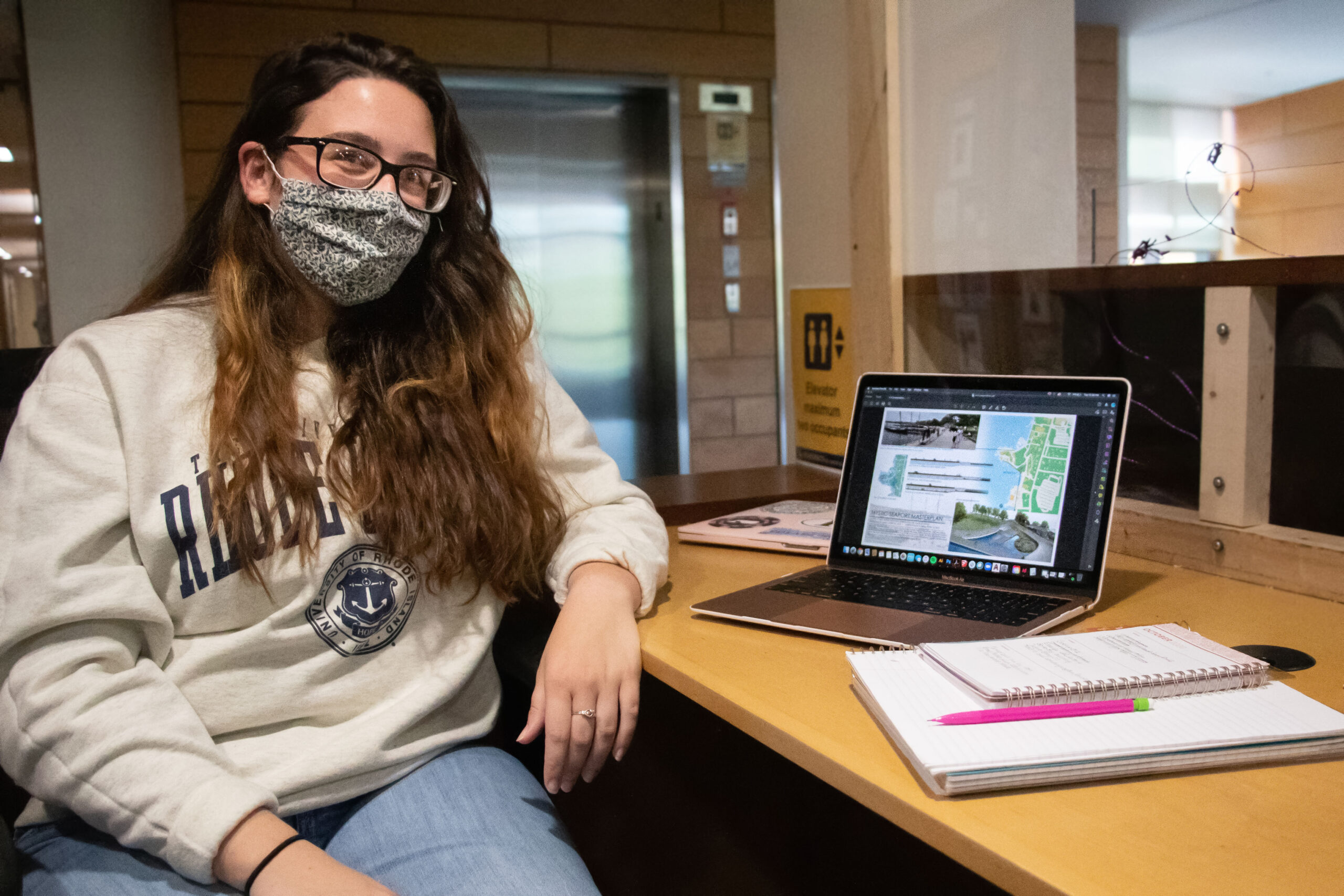Landscape architecture student Maggie Spano showcases her final portfolio. Photo by Siobhan Richards.
Landscape architecture is as it sounds: adding more green spaces to public spaces, but, to Department Chair William Green, landscape architecture is about giving a “voice to living and non-living creatures that don’t have a voice.”
Green teaches students in his classes about sustainability, reducing energy and bringing green infrastructure to public spaces. An example of such infrastructure could be something that takes storm water into a rain garden and bioswales.
For students involved in the major, the beginning years focus on computer skills, hand skills like drawing and learning about ecology and slope; all of which come in hand when they are actually building in the future.
By senior year, the students are involved in a studio project, where they can hypothetically work on a large project. This could include developing infrastructure to a memorial or within an empty lot.
For senior Maggie Spano, this project looks like working with cities on open lots, being able to build what they have in mind and open their creativity.
“The landscape architecture department has given me the opportunity to learn about how influential our studies are on our changing planet,” Spano said. “Getting to know my class and professors in the studio setting has enhanced everything that we have learned, and although we are primarily learning online now, we still talk like we are together in Rodman Hall.”
Right now, the senior students are working on their studio project, which gives them real life experiences.
“Students get jobs,” said Green. “Students get hired by the best firms.”
Students are taught real life experiences first hand, which get them ready for the real world.
“We work with tech, art and design,” Spano said.
Students also learn about construction, which is very important and specific to their major. They work on creating public spaces that plant life can influence. Plant life in public spaces includes a wide variety, from inside spaces such as hospitals according to Spano, but also outdoors, like the building of a green roof, according to Green.
Students are also taught about Leadership in Energy and Environmental Design (LEED) buildings. At URI’s Kingston campus, there are many LEED buildings. For example, Hillside Hall is a LEED building; it has solar panels on the roof, and the parking lot outside of Hillside has a storm filtrations system under it to prevent flooding.
The annual landscape architecture speaker series is a great opportunity for students to learn about specific projects and architects’ work to further their studies in the field.
On Oct. 22 at 6 p.m., four landscape architects from Cape Town, South Africa will host a virtual lecture in continuation of the series.
Landscape architecture teaches students how to have a “securing future, not just for humans, but for all creatures,” according to Green.
It is not just about adding green life to rooms, it is about how we can use green life to create a more sustainable and healthy future.
“Contact with nature is a human need: biophilia,” Green said.

